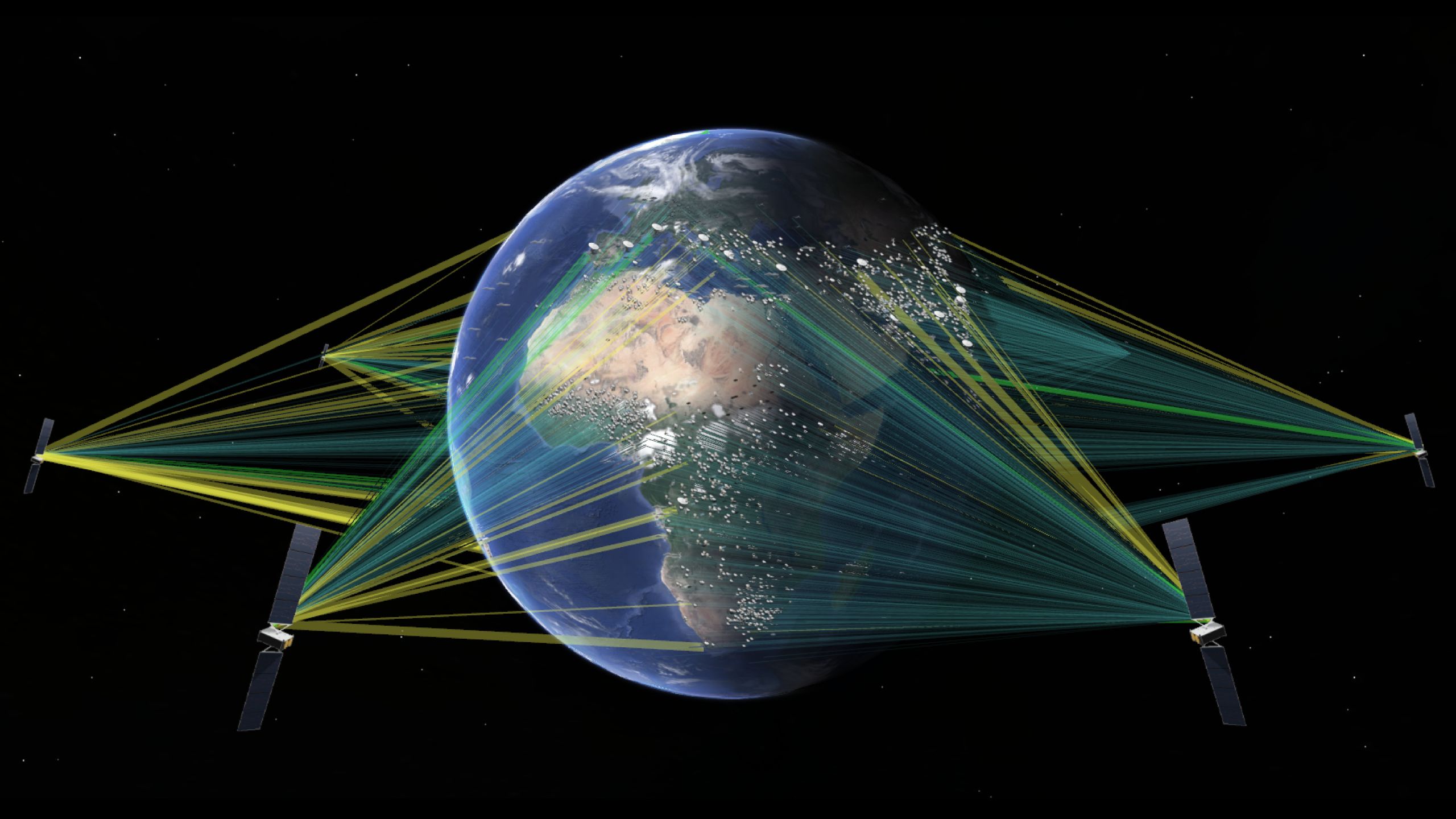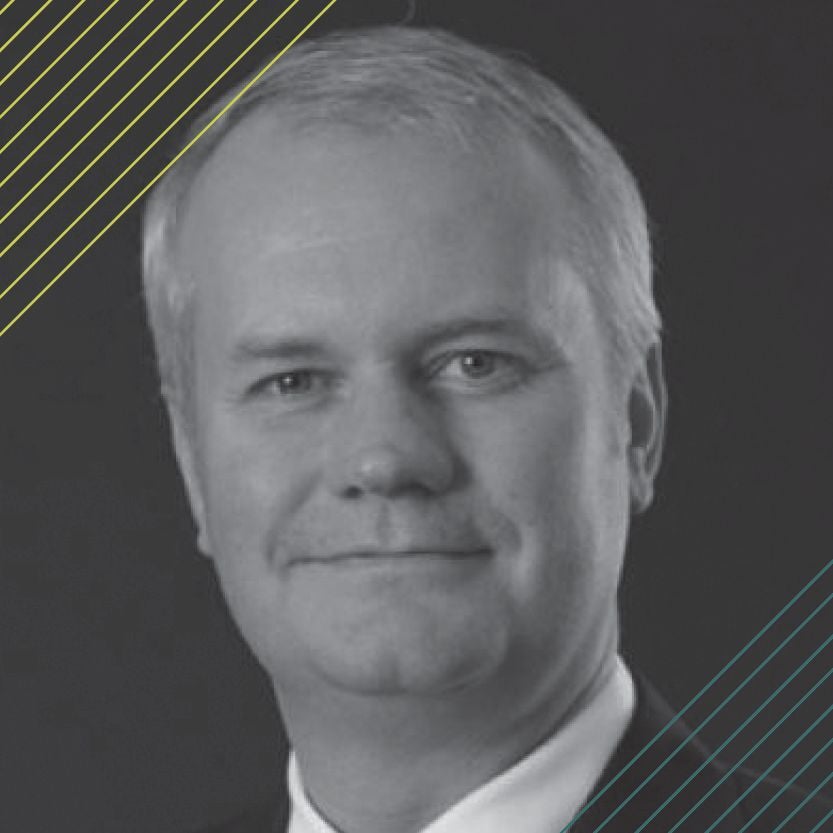How O3b mPOWER Challenges the Conventional Wisdom of Satellite Networks

Reach, performance and flexibility augmenting the end-to-end fiber infrastructure – this is how SES Networks Executive Vice President Stewart Sanders describes the unique characteristics of the operator’s O3b mPOWER managed network service. Enabled by an upcoming medium-Earth orbit (MEO) constellation, O3b mPOWER is designed as a high-capacity, low-latency, flexible satellite-based data communications system that includes unique ground- and space-segment technologies running on an open “Adaptive Resource Control (ARC)” software solution.
Boeing Satellite Systems is building the first seven O3b mPOWER satellites, which will be capable of supporting thousands of spot beams to provide what is being promoted as “triple the capacity of the upcoming ViaSat-3 constellation.” SpaceX will launch this first batch in 2021 on a Falcon 9 rocket, with a second batch right behind it later that same year.
In addition to its performance specs, one could argue that O3b mPOWER’s primary benefit is that it creates a familiar, economical managed network environment for enterprise and networking customers. They no longer have to completely understand or worry about what’s happening in space, and, more importantly, they don’t have to spend tons of money on expensive fiber builds to get fiber-like performance. Like a public water supply, O3b mPOWER ensures that the tap is always ready to run at whatever rate the customer requires.




Sanders and his team at SES are offering O3b mPOWER to remote and mobility industry target segments such as cruise lines, offshore energy, government and mining, enabling applications that were previously dependent on fiber – Cloud, Artificial Intelligence, Data Analytics and aggregated mobile and fixed data backhaul – to underserved areas. “We’ll also partner with terrestrial network providers to extend their fiber networks without requiring new build-outs that may not be economically or physically feasible,” says Sanders. “We’ll reach all of the existing O3b markets plus others that we couldn’t serve as well as we’d like due to limitations on capacity and number of available beams.”
Peeking inside at the “guts” of the system, O3b mPOWER runs on an industry-standard Metro Ethernet Forum (MEF) ethernet managed service at fiber-like gigabit speeds, supported by a space segment that combines MEO and GEO satellite capacity for optimal reach. The system’s ARC software supports industry standard application interfaces, Open Network Automation Platform (ONAP)-based orchestration and MEF certifications to interoperate with networks regardless of physical deployment.
The system’s low latency is derived from the operator’s medium non-GEO orbital altitude, and the performance capacity comes from using Ka-band spectrum through fully digital electronic components that don’t physically move. “Integrated circuits and phased array antennas allow us to dynamically provision and steer user links in real-time through our ARC software solution,” says Sanders. “We’re also utilizing open standard interfaces as much as possible to ensure we take best of breed and existing off-the-shelf capabilities as building blocks. Because the system is designed to be ‘open,’ it does not require specific platforms or signaling frameworks to access the bent-pipe capacity.”

Stewart Sanders
Executive Vice President
O3b mPOWER is also made possible through technology partnerships. SES will support the ARC software solution’s fleet manager capability, currently under development with another partner, Kythera Space Solutions. SES is designing this software to operate all future SES constellations such as the SES-17 GEO-orbit high-throughput satellite, which is planned for a 2021 launch over the Americas.
SES formed critical new partnerships with cloud software giants Microsoft and IBM to certify operation over the O3b mPOWER managed service. In September, SES announced it entered into an agreement with Microsoft to provide dedicated, private network connectivity from any vessel, airplane, enterprise, energy or government site in the world to Microsoft Azure ExpressRoute via its multi-orbit satellite systems. In addition, SES also granted Azure customers access to O3b mPOWER. Sanders explains that SES is working with ONAP and AMDOCs deployed on the Microsoft Azure cloud so that its customers can automate service delivery and accelerate time-to-market.
William Chappell, CTO of Microsoft Azure Global, hails the partnership as the beginning of a new era for software-defined satellite systems. “At Microsoft, we’ve been interested in building a ‘space vertical’ for quite some time,” says Chappell. “By that, we mean building a business to provide intelligent software and cloud networking to the already existing space infrastructure. Satellites in various orbits offer unique capabilities, the best physical reach, and best of all – over an economically feasible infrastructure. We see our partnership with SES and the O3b mPOWER solution as the gateway to enabling cutting edge applications at the remote edge, including automated industry and precision agriculture. The form and function of the cloud in this system makes it truly revolutionary.”
Ross Ortega, Microsoft’s Azure Networking Project Manager, says that the partnership is initiative-based and will expand to meet the demands of new markets, including government. “We are collaborating with SES across a range of initiatives to build upon their expertise in satellite communications and increase connectivity to critical services and applications for customers in remote and underserved areas,” says Ortega. “This new collaboration between SES and Microsoft Azure Express Route further enables us to bring Azure to any business or government site.”

William Chappell
CTO




SES became an IBM partner by joining its Cloud Direct Link Service Provider Program in 2018, which certifies SES to provide connectivity to IBM’s global cloud customers in markets such as government, global telecommunications, maritime, aerospace, energy and others with remote or mobile end points. SES began collaborating with IBM to enable applications and solutions in locations with previously limited connectivity due to unreliable or non-existent terrestrial networks.
According to SES Networks CEO John-Paul Hemingway, cloud services are a cornerstone of the digital era, during which satellites will play a central role in how they function and evolve at the edge. “With performance that rivals the terrestrial fiber connectivity, our standards-based fleet is designed to make satellite a seamless ‘plug-and-play’ connectivity option for robust solutions for cloud leaders like IBM Cloud,” says Hemingway.

John-Paul Hemingway
CEO
When asked how the adaptive and intelligent elements of the cloud layer work within the overall O3b mPOWER system, Ewald Schrap, SES’s cloud market vice president explains that it operates no differently than the way most tech-savvy customers expect. “We make use of cloud services ourselves just like our customers do. O3b mPOWER is no different,” says Schrap. “By having such close relationships with cloud partners like Microsoft and IBM we can drive faster time-lines at better cost points. Just like our customers, our cloud adoption also allows us to focus on the key areas that are unique to our capabilities and that will have the most positive impact on our customers rather than to spend resources on basic compute platform services as that is taken care of by the cloud provider. One of those focus areas is the ARC system, which allows us to make our connectivity as adaptive and flexible as other cloud elements like compute and store.”
Moving down into the ground segment, O3b mPOWER’s ground equipment consists of antennas and modems interconnecting with data networking equipment. Sanders says that SES is working with partners on the ground to develop innovative technologies that minimize costs through standardization and economies of scale. “While we encourage the development of low-cost flat panel customer edge terminals we also work closely with proven parabolic manufacturers to bring down costs with expanded functionality,” he explains. “SES is provisioning a core of command, control and data gateways, which will be augmented with a number of ‘customer’ gateways – gateways that can be provisioned according to our customer needs with regards to location, size and infrastructure requirements. We expect a number of customer gateways to also enable virtualized instances of the cloud at the edge of the deployed networks this improving end user experience.”
Like modern virtualized network services, O3b mPOWER is also designed to evolve and adapt. Sanders hints that the service will eventually provide more capacity through additional satellites in orbit, expand its reach through inclined orbits, and support additional applications through future software development. “Our market strategy is flexible, offering telcos and mobile network operators with seamless integration into their networks all the way across to individual enterprise end-to-end managed services,” says Sanders. “We have strong established relationships with system integrators and partners who focus on specific industries such as offshore energy, remote mining and government applications and are always looking forward to new innovative partnerships to evolve in this ever-expanding industry of data communications.”







